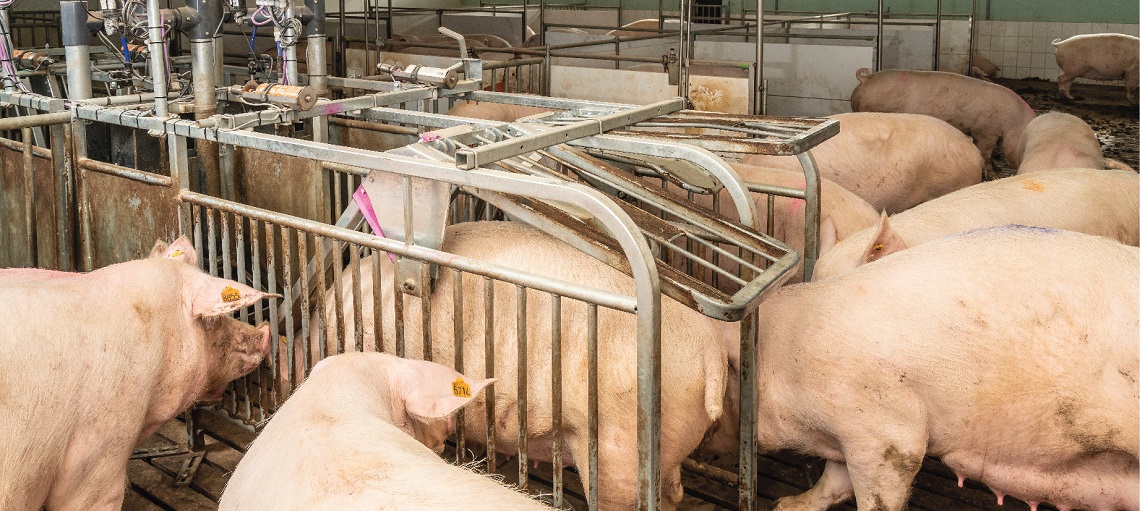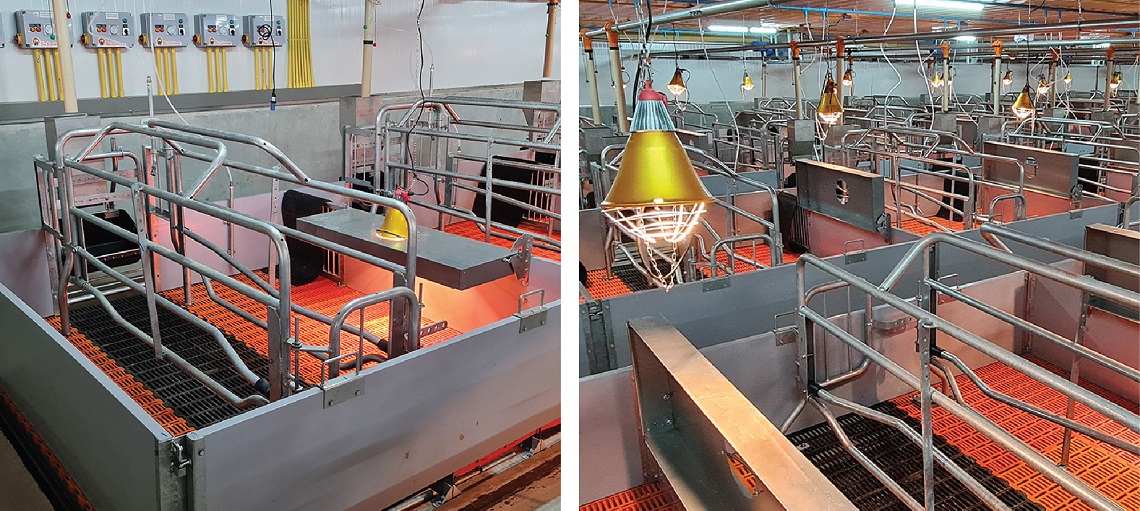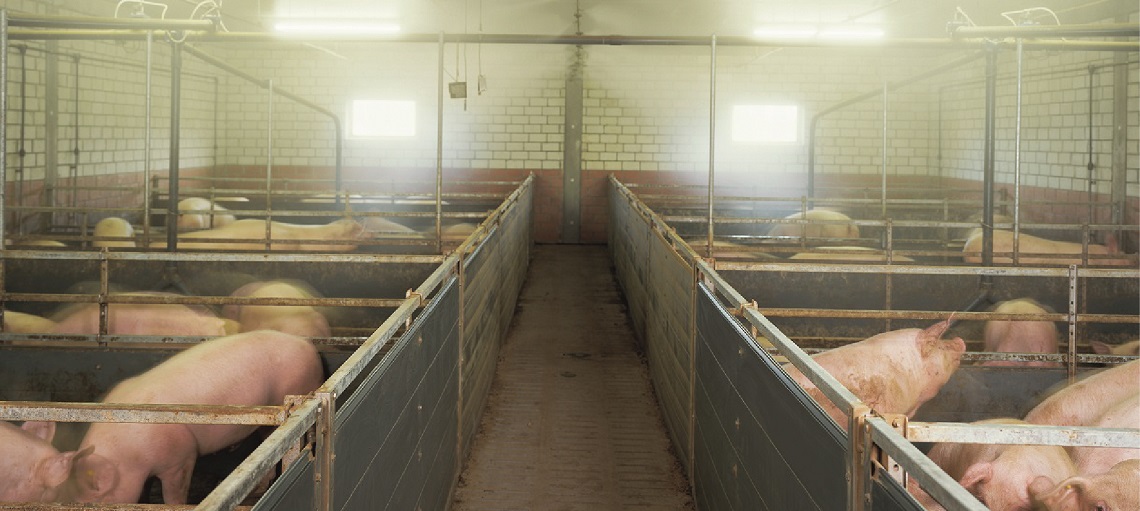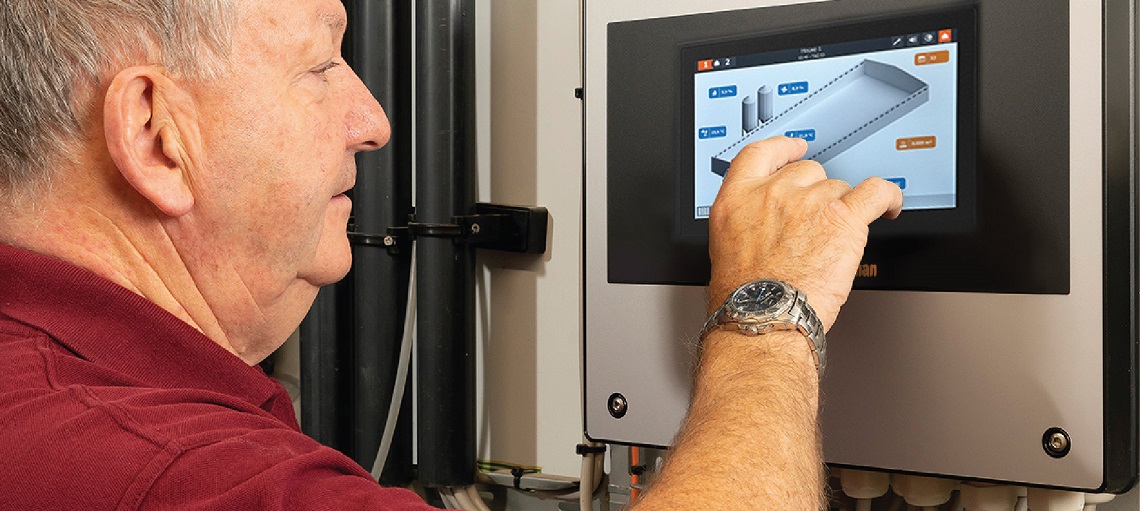Comfy Hogs: The Vital Role of Temperature Regulation in Pig Production
In the world of pig farming, temperature regulation isn’t merely about comfort—it's a crucial factor that directly impacts the health, welfare, and productivity of pigs. Unlike humans, pigs lack the ability to sweat, making them highly susceptible to heat stress in high temperatures. Likewise, if the temperature is too low, pigs will adapt to divert the nutritional value of their food for heating itself rather than for growing.
Hence, it is important to keep pigs housed in a thermal comfort zone so that they are able to maintain their well-being and achieve optimum growth performance. Typically, pigs should be kept in temperatures ranging from 15 to 21 degrees Celsius that allow them to maintain an ideal body temperature of around 38 to 39 degrees Celsius. These of course are approximate values and can vary based on the individual pig, its breed and growth phase.
Maintaining the proper temperature in pig houses goes a long way to positively influence various aspects of their lives:
Stress Reduction
Heat-stressed pigs exhibit reduced feed intake, leading to slower growth rates and lower market weights. This can significantly impact your farm's profitability. Pigs experiencing heat stress can reduce their feed intake by up to 10-15%, resulting in reduced weight gain and economic losses.
Health Maintenance
Excessive heat can cause a range of health issues in pigs, including respiratory distress and heat stroke. Younger pigs are particularly vulnerable to these heat-related ailments. Heat stress can increase the incidence of respiratory problems by 20-30% in pig herds, leading to increased veterinary costs and reduced productivity.
Ideal Metabolic Rate
The rate in which the body converts food into energy is referred to as metabolic rate, which is primarily dictated by the pig’s body temperature. Pigs with low body temperature, for example, will need more food to gain weight than those with normal body temperature. This can eventually lead to slower growth rates and decreased weight gain.
Behavioural Well-being

Pigs kept in a comfortable environment exhibit natural behaviours, such as foraging and social interaction, indicating good welfare and overall contentment. Pigs housed in optimal temperatures show improved behavioural indicators, including reduced aggression and increased socialisation, contributing to a harmonious herd dynamic.
The economic benefits of maintaining optimal and stable temperature are clear. Seasoned farmers know that exposure to extreme temperatures is a major cause for concern that can result in lower weight gain, reduced pregnancy rates, reduced feed efficiency and increased sickness among others. Whether in hot climates or cooler regions, there are a few elements that need to work in-sync to create a nurturing environment for pigs, as follows:
Ventilation

Invest in proper ventilation systems that facilitate good airflow within the house. Adequate ventilation removes excess heat and moisture, minimises odours, and provides a continuous supply of fresh air. Properly ventilated houses can reduce ammonia levels by up to 80%, creating a healthier environment for pigs and farm workers alike.
Insulation

Ensure your barn is well-insulated to maintain a consistent temperature year-round. Effective insulation helps keep pigs warm in cooler climates and prevents overheating in tropical regions such as Asia. In fact, a well-insulated house can reduce heating and cooling costs by 30-50%, making them a cost-effective long-term investment for pig farmers.
Cooling Systems

Consider installing cooling systems such as sprinklers, misters, or wallows to help lower ambient temperatures, especially during hot weather spells. These systems provide relief to pigs and mitigate heat stress. Properly designed cooling systems can reduce ambient temperatures in pig houses by 5 to 8 degrees Celcius, significantly improving pig comfort and performance.
Heating Systems
Radiant heaters, air heaters and heat lamps are useful to maintain the ideal temperatures in colder climates. While older growers or mature pigs can withstand a colder environment, piglets especially are very susceptible to low temperatures. It is recommended to activate heating systems when temperatures begin to fall below 16 degrees Celsius.
Monitoring

Regularly monitor temperatures both inside and outside the barn. Use thermometers and observe pig behaviour for signs of heat stress, such as increased panting, restlessness, and reduced activity. Likewise, look for signs such as huddling and increased food consumption, which are signs that the pigs are feeling cold. Early detection allows for prompt intervention to prevent temperature-related issues.
Maintaining optimal temperatures in your pig farm isn’t just a matter of convenience—it’s a fundamental aspect of responsible and profitable pig management. Whether it becomes too hot or too cold, extreme temperatures can affect pigs, potentially harming their productivity. However, it is equally important to ensure proper nutrition, health management and biosecurity measures are in place, forming a holistic approach to profitable pig production.
Are your pigs growing in a thermal comfort zone and living up to their full growth potential? Click the ‘Send a Message’ Button below to talk to us!

